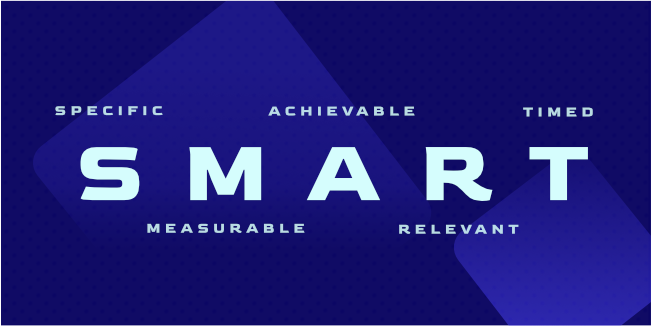10 Crucial KPIs for Software Development

Measuring a team's performance with software metrics is essential to setting and achieving business goals.
But setting a goal, even the best, is still not enough. Modern research shows that to increase the probability of achieving a goal, this goal must be written down. Sounds incredible? Perhaps! But the data clearly shows that when people write down their goals, the likelihood of achieving them is as much as 33% greater.
While setting goals in private life is not an obligation (unfortunately ;-), business goals are the foundation of every company. It is impossible to run a business successfully if you don't know what the company wants to achieve and how to measure those achievements.
In software development companies, determining indicators measuring work efficiency is crucial, as it translates into the responsibility of the software development team for the planned tasks and goals. In addition, the software development process is complex and exhaustive, and establishing key performance indicators is extremely helpful. It helps to meet project requirements and customer satisfaction, which is a priority for the software development team and the entire company.
What is KPI for software development?

Key performance indicators (KPI) measure a company's overall performance. Most software development companies assess introducing KPIs as a great business decision. KPIs for software development indicates how well your development efforts align with your company's goals.
Choosing the right software indicators is the first step. Well-chosen indicators will allow the creation of a high-quality software product. Meanwhile, it is common for companies to choose the wrong metrics to measure the success of a development team.
It is because business managers often do not know enough about the nuances of programming and therefore choose the wrong software development metrics.
Modern software development teams create flexible software to make developing, delivering, and scaling applications fast and easy. It is the basis of Agile project management. This is why software KPIs should rely on business scalability as a core component of performance measures. However, it must not be forgotten that the development team not only has to create great software but also that it has to translate into business value. Therefore, focusing on indicators that combine these two factors is crucial.
Why are metrics important?

KPIs play a critical role in the software life cycle.
Setting goals means being aware of how you pursue them. Below you will find some undeniable benefits associated with setting software development KPIs:
- They allow to identify, track and communicate any problems and potential areas for improvement to obtain better results in the software development process (especially in a team using modern Agile methodology).
- Reduce software talk costs by reducing an infinite number of patches.
- Increase the return on investment (ROI) due to the performance improvement of software developers.
- They show the participants the process and the current state of development of the project.
- They help prioritize and manage the working time of the entire software development team (maximizing team performance).
- They increase the motivation and commitment of software teams.
- They increase the chances of the timely implementation of the project following the assumed budget.
Types of key performance indicators

There is no one-size-fits-all set of performance criteria that all development teams can benefit from. It all depends on the specifics of a given project and related goals.
Velocity
There is no one-size-fits-all set of performance criteria that all development teams can benefit from. It all depends on the specifics of a given project and related goals.
In agile development, a sprint is a time period set aside for performing specific tasks. The velocity of your team's work during a sprint is measured in miles per hour (mph). There are several ways to measure speed. Story points, for example, are a popular method of quantifying the amount of labor put into a software program.
In the first place, calculating story points means assessing the size of a software project and the time it will take to complete it. You may estimate how realistic your team's objectives are using velocity. You'll have a decent sense of your team's average velocity after only three sprints.
Sprint Burndown
The Sprint Burndown is a more precise measurement of how much work gets done during a sprint. While sprint burndown and velocity are similar, they are not the same thing.
Teams may use sprint burndown as a software metric to adjust their performance when the measurement does not match expectations.
Sprint Burndown Charts are used by development groups to graphically show the data they collect and track time against story points.
Release Burndown
Burndown not only shows you how much time has elapsed since the last deployment but also takes note of release progress. This statistic is broader in scope than sprint burndown. And because it can help teams manage the release of a product, this metric is useful.
Software development teams may use a release burndown chart to see if they're on track.
Businesses with complex data to show investors can provide an ROI after the release. You may also inform delighted consumers about delays or early releases.
Cycle Time
Cycle time is a software development KPI measuring time spent on a given task. Thanks to this indicator, you can assess the software development process's efficiency and estimate how much time the team needs to complete subsequent tasks.
Cumulative Flow
The cumulative flow shows in the form of a diagram what individual stage tasks related to a given project are. Each diagram color corresponds to a different task status, e.g., "in progress" or "approved." The colors form bands with a width corresponding to the cycle time.
The color presentation of this indicator facilitates its reading and interpretation. It contributes to the consistency of work by the team.
Flow Efficiency
Flow efficiency measures the time spent on a given task to the total time. Occasionally, downtime may occur during the lifetime of a project due to various factors. Sometimes these are factors independent of the team, and sometimes it turns out that it is enough to improve the level of communication to improve the entire process. The flow efficiency indicator allows you to check the real efficiency and also allows you to understand why the downtime occurred, which worsened the ratio.
Code Coverage
It's a code quality metric that promotes continuous delivery and test-driven development. The code coverage percentage reflects how much of the source code is subjected to testing and indicates how thoroughly that amount has been tested. The higher the code coverage, the better the developmental progress. However, it is seldom 100% accurate, as some code will not execute due to undetected flaws.
Code Stability
The term "code stability" refers to how little adjustments in the application might endanger your company or project objectives. It is generally believed that changing a few lines of code should not affect the entire application. But it can be different ;-) Code stability can be seen in the percentage of code deployed that causes downtime.
Code Simplicity
The simplicity of the code is an indicator that can be determined in several ways depending on our preferences.
It is calculated based on, among other things, the number of independent paths that need to be encoded. Fewer paths are better as this is directly related to the simplicity of the code. Simple code is easy to maintain but also easy to test, which goes a long way in the software development process.
Code Churn
This software development KPI represents the stability of the code. It indicates whether there is a lot of code change and how often it occurs. It is considered high maintenance and risk if coding is done so that it must be redone each time to accommodate new features.
Appropriate software development KPIs - what are they?
Above, we have listed some key indicators that may be useful for your project. Regardless of your chosen indicators, remember that they must meet the SMART principle. Only such indicators will fulfill their role and affect the team's performance and the project's success.

The SMART principle is a method that supports the correct definition of goals in the project, thanks to which the chance of achieving them increases. Setting goals in accordance with this principle requires careful analysis of what we want to achieve. Its name is composed of an acronym derived from the following words:
Specific
It means that we have to know clearly what our goal concerns. It should be specified and defined and what we want to achieve thanks to it. Target specificity means precision in describing what we want to achieve in the future, not how we will achieve it in detail. By the Specific principle, a well-formulated goal is easy for us to imagine and measure. It will facilitate further work on other aspects following the S.M.A.R.T. and allow you to base it on specific numbers and sizes. So that you can follow the progress of its implementation.
Measurable
The goal of the project must be measurable and measurable. Measurability allows you to determine whether the goal has been achieved. The progress of achieving the goal can be defined in several ways, e.g., by presenting our stages, providing actual values, or specifying what the situation will look like after achieving the goal.
Achievable
Software engineers who want to achieve a given goal must have the opportunity to obtain the necessary resources needed to achieve it. The resources required to achieve a goal can be, for example, money, time, materials, people, skills, knowledge, as well as motivation. At the same time, it is essential to check whether the people who are to achieve a specific goal have a real impact on the possibility of achieving it. Achieving the goal should bring a measurable benefit (not necessarily material). The goal should also be attractive and ambitious.
Relevant
The goal should be relevant, but it should also be a specific value for whoever will pursue it. It should be right and make sense so the employee can effectively strive for its implementation. Each employee should be fully aware that his function in achieving the goal is essential.
Time-bound
It is vital to set an exact deadline for the goals you set. Thanks to this, a set goal increases mobilization to action. It is a condition for effective monitoring of activities and processes. By setting exact dates, you can avoid the pitfall of constantly postponing your target. Be careful not to make unrealistic assumptions, i.e., that the goal will be achieved in a short time. Setting too much time is also disadvantageous as it causes a lack of strong motivation to achieve the goal.
Best practices in choosing software development KPI

Choosing the right metrics is important, but using them correctly is also essential. Below are some practices for the correct use of software indicators.
Combine KPIs with a goal
Metrics must be related to the goal. Developers may better understand and adhere to requirements by focusing on metrics as goals, which can help improve software quality and user experience.
Long-term data has more value
Data from too short a period of time can be easily misleading.
The direction a trendline is moving can provide valuable information about the process. Therefore, observing changes over a longer time and identifying an overall trend is better. It's also essential to monitor the consequences of any modifications made to the procedure.
Ongoing monitoring
All data should be monitored on an ongoing basis. Short-term data will not help determine the direction of the trend. Still, if there is a serious problem, it will be immediately apparent in the short-term data. Thanks to this, it is possible to react almost immediately and prevent such situations in the future.
Don't be afraid to change indicators
If certain project measures don't improve over time and provide you with no usable information on how to achieve your team's objectives, simply stop using them. These circumstances indicate that you may have picked metrics that aren't relevant to your project and are not moving closer to your goals.
To wrap up
In this article, we have listed a few, in our opinion, critical KPIs for software development. However, there are many other software metrics that you can use to maximize the performance of software developers.
You may think that the more metrics, the better, but this is a misconception. Research shows that too much data leads to poor interpretation, which translates into chaos and a disappointing level of the final project.
Nowadays, the way operational metrics are collected, calculated, and reported is not a problem. The more important aspect is how to choose and use them properly. Correctly selected KPIs help ensure the final product's high quality, which translates into customer satisfaction and market success. We have been successfully creating software for 12 years, so if you want to know how we do it, please get in touch with us.